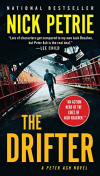David Macaulay Books In Order
Book links take you to Amazon. As an Amazon Associate I earn money from qualifying purchases.Publication Order of Architecture Books
| Cathedral | (1973) | Description / Buy at Amazon |
| City | (1974) | Description / Buy at Amazon |
| Pyramid | (1975) | Description / Buy at Amazon |
| Underground | (1976) | Description / Buy at Amazon |
| Castle | (1977) | Description / Buy at Amazon |
| Unbuilding | (1979) | Description / Buy at Amazon |
| Mill | (1983) | Description / Buy at Amazon |
| Building the Book Cathedral | (1999) | Description / Buy at Amazon |
| Mosque | (2003) | Description / Buy at Amazon |
Publication Order of How It Works Books
| Castle: How It Works | (2012) | Description / Buy at Amazon |
| Jet Plane: How It Works | (2012) | Description / Buy at Amazon |
| Toilet: How It Works | (2013) | Description / Buy at Amazon |
| Eye: How It Works | (2013) | Description / Buy at Amazon |
Publication Order of Children's Books
| Motel of the Mysteries | (1979) | Description / Buy at Amazon |
| Baaa | (1985) | Description / Buy at Amazon |
| Why the Chicken Crossed the Road | (1987) | Description / Buy at Amazon |
| Black and White | (1990) | Description / Buy at Amazon |
| Ship | (1993) | Description / Buy at Amazon |
| Shortcut | (1995) | Description / Buy at Amazon |
| Angelo | (2002) | Description / Buy at Amazon |
| Built to Last | (2010) | Description / Buy at Amazon |
| How Machines Work: Zoo Break! | (2015) | Description / Buy at Amazon |
Publication Order of Non-Fiction Books
| Great Moments in Architecture | (1978) | Description / Buy at Amazon |
| The Way Things Work | (1988) | Description / Buy at Amazon |
| Rome Antics | (1997) | Description / Buy at Amazon |
| The New Way Things Work | (1998) | Description / Buy at Amazon |
| Building Big | (2000) | Description / Buy at Amazon |
| Mammoth Math | (2007) | Description / Buy at Amazon |
| The Way We Work | (2008) | Description / Buy at Amazon |
| The Way Things Work Now | (2016) | Description / Buy at Amazon |
| Crossing on Time | (2019) | Description / Buy at Amazon |
| Mammoth Science | (2020) | Description / Buy at Amazon |
Publication Order of Anthologies
David Macaulay is a British-born American author of nonfiction and children’s books. His popular works include The New Way Things Work (1998), The Way Things Work (1988), and Cathedral (1973). Besides writing, Macaulay is an illustrator. His illustration work has been featured in nonfiction books that combine text and illustrations explaining engineering and architecture design.
His debut, Cathedral (1973), is a detailed history filled with drawings. It’s about building a made-up Gothic cathedral. Other books include City (1974), which describes Verbonia, an imaginary but typical old Roman city, and how it was built. Some of Macaulay’s children’s books include The Way Things Work, The New Way Things Work, and The Way Things Work Now. His books are filled with whimsical humor. For example, The Way Things Work tells the story of woolly mammoths and cave people using giant-sized versions of devices he’s explaining.
Macaulay has won several awards, including the Caldecott Medal, the MacArthur Fellows Program, the Christopher’s Award, the Boston Globe-Horn Book Award, and the American Institute of Architects, among many others.
Soon after publication, Black and White (1990) received mixed reviews. However, the book gained recognition and won the prestigious Caldecott Medal for its illustrations in 1991. The book features four stories, each distinct in design and illustration style. “Seeing Things” is brought to life using watercolor, “Problem Parents” uses pen and ink along with dialogue conveyed through captions, “A Waiting Game” with colored ink, while “Udder Chaos” uses colored ink with lines removed, showcasing a diverse range of artistic techniques.
It is often regarded as a prime example of a postmodern picture book due to its metafictional structure, challenging traditional storytelling norms.
One of the book’s defining aspects is its open-ended nature, allowing for multiple interpretations. This can sometimes be tough for readers seeking a simple story. Both the text and the illustrations in the book interact dynamically, occasionally creating tension or contrast between them.
Black and White significantly contributed to evolving the concept of picture books. It influenced subsequent works in the genre either directly or indirectly. The unique storytelling approach and artistic innovation have left a lasting impact on the children’s literature genre.
In the 1980s, David Macaulay began creating the initial sketches that would later form the basis of his book. He was captivated by the notion of journeys, particularly the idea that turning the pages of a book could evoke a sense of travel in itself. Macaulay merged four distinct stories from his collection into a unified book concept as his sketches piled up. His primary aim was to ensure that each story possessed its distinct appearance and feel. He deliberately employed diverse artistic mediums and characters for each narrative fragment. He described the book as being about the book itself, meant to be experienced as a whole, inviting readers to explore its layers and connections between text and illustrations.
The technology used for printing, capable of accommodating multiple illustration styles and typesets, was relatively modern at the time of Black and White’s release. Macaulay’s innovative approach to these printing capabilities significantly shaped the book’s unique visual presentation. This further solidifies its impact within the realm of picture books.
Additionally, passive voice in the writing style subtly nudges readers to take control over the story’s unfolding, offering them a sense of agency.
Furthermore, the flexibility of the book allows readers to explore the stories in any sequence or combination, sometimes requiring a non-linear approach for complete understanding. As Macaulay suggested, making sense of the book doesn’t necessarily follow a linear path. This adds a layer of subtle humor and irony to the text.
The illustrations play a crucial role in making the narrative enjoyable for the young audience. For instance, despite the recurring visual concept of a mask on nearly every page, the word itself doesn’t appear in the text. This, hence, contributes to the book’s complexity. This complexity makes it appealing to young children, the popular audience of picture books, and older children and teenagers.
Among the themes explored in the book are the dynamics of parent-child relationships and the interconnectedness of life. Trains serve as a recurring symbol throughout the four stories. However, the thematic clarity can be found in comparing two stories, both involving children trying to comprehend unusual events and longing to reunite with their parents.
Black and White emphasizes the idea that things are rarely as straightforward as they may seem. For instance, the use of the words “Black and White” written in various colors on the cover and title page illustrates this notion. This hints at a deeper complexity beyond typical appearances.
The Way Things Work is a captivating nonfiction book published in 1988 by David Macaulay in collaboration with Neil Ardley. It is an introduction to various everyday machines while at the same time unraveling the scientific principles in their underlying functionality. The book covers a wide range of machines, ranging from simple tools like levers and gears to more intricate devices such as radio telescopes and automatic transmissions.
Each page predominantly features one or more detailed diagrams that elucidate how these machines operate. These diagrams are not only informative but also whimsical, often portraying woolly mammoths interacting with or demonstrating the machines. Alongside these illustrations are intriguing stories about a fictional inventor. The inventor is responsible for connecting the mammoths to the workings of these devices. Doing this adds an element of mischief to the learning process.
The book’s concept expanded beyond its pages, inspiring various adaptations. It led to a short-lived animated TV show, a Dorling Kindersley interactive CD-ROM, a fun pinball game called Pinball Science, and even a board game. An immersive family “ride” experience incorporating animatronics and a 3-D film based on the book was initially a major attraction at the San Francisco Metreon. Unfortunately, this attraction closed down in 2001.
Overall, The Way Things Work brilliantly combines educational content with imaginative storytelling. This makes complex technical concepts accessible and entertaining for readers and viewers across different media formats. If you’re looking for technically engaging children’s books for your kids, then it’s highly recommended you check out David Macaulay’s books.
Book Series In Order » Authors »


 Any issues with the book list you are seeing? Or is there an author or series we don’t have? Let me know!
Any issues with the book list you are seeing? Or is there an author or series we don’t have? Let me know!